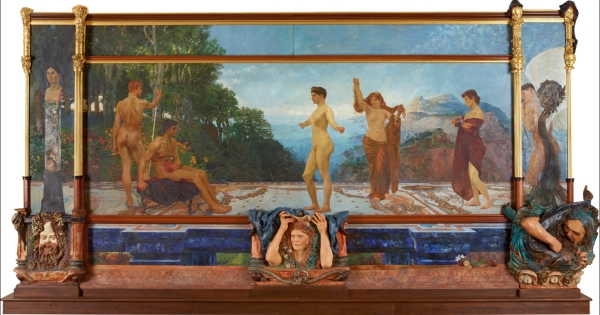Decadence – Aspects of Austrian Symbolism
Lower Belvedere, Vienna
From Jun 21, 2013 until Oct 13, 2013

Max Klinger: The Judgement of Paris, 1885
In summer 2013, the Belvedere will be the first museum to highlight the multifaceted positions of Austrian Symbolism in a large-scale exhibition. An in-depth exploration of this significant movement in Austrian art around 1900, which has hitherto almost exclusively been addressed in partial aspects, is long overdue. As a first step, the exhibition is meant to present a general overview of the development and the various positions of the Symbolist approach in Austria and Central Europe.
As early as the 1870s, Symbolism started to evolve from the spirit of décadence, which discovered for itself the cryptic aestheticism of decay and of the mystical and unfathomable. The Symbolist movement superseded the official style of Historicist painting, shifting its focus to the subjective perspective of psychological processes, which found expression in a suggestive language of colour and form. Its abandonment of banal reality led some artists to create idylls, while others invented cosmic visions. This new aestheticism, propagated by such artists as Max Klinger, Franz von Stuck, Fernand Khnopff, and Jan Toorop, was transmitted in Austria and Central Europe first and foremost via the Vienna Secession. In Austria, Rudolf Jettmar, Alfred Kubin, and Karl Mediz turned out to be among the most consistent exponents of Symbolism. Yet Symbolist ideas also played an important role for leading personalities of the avant-garde, including Gustav Klimt, Egon Schiele, and Koloman Moser.



